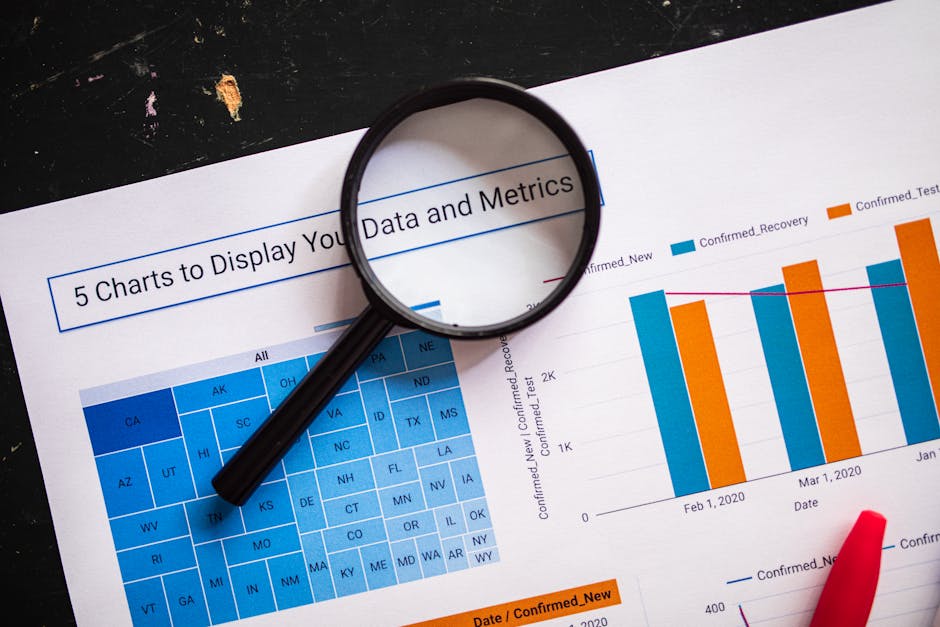Unlocking Business Success: Understanding Key Metrics for Business Performance
Businesses are complex organisms that require constant monitoring, evaluation, and adjustment to thrive in today’s competitive landscape. One of the most crucial aspects of managing a successful business is understanding and utilizing key metrics for business performance. These metrics provide valuable insights into how well a business is performing, where improvements can be made, and what areas need attention. In this comprehensive guide, we will delve into the world of key metrics for business performance, exploring the various metrics that matter most, how they are calculated, and why they are essential for driving success.
The Importance of Key Metrics

Key metrics, also known as key performance indicators (KPIs), are quantifiable measures that help businesses track and evaluate their performance over time. These metrics provide valuable insights into various aspects of a business, including sales, marketing, operations, finance, and customer service. By tracking key metrics, businesses can identify trends, set goals, measure progress, and make informed decisions to drive growth and profitability.
But with the vast amount of data available to businesses today, it can be overwhelming to determine which metrics are truly essential for success. That’s where understanding the key metrics for business performance comes into play. By focusing on the most critical metrics that align with your business goals and objectives, you can effectively measure and optimize your performance to achieve sustainable success.
Revenue Metrics

Revenue metrics are one of the most fundamental metrics for measuring business performance. These metrics provide insights into a business’s ability to generate revenue, manage costs, and maximize profitability. Some key revenue metrics include:
1. Revenue Growth Rate
The revenue growth rate measures the percentage increase or decrease in a company’s revenue over a specific period. This metric helps businesses track their revenue expansion and assess the effectiveness of their growth strategies.
2. Average Revenue Per User (ARPU)
ARPU is a metric that measures the average amount of revenue generated per user or customer. This metric is particularly important for subscription-based businesses or those with a recurring revenue model.
3. Customer Acquisition Cost (CAC)
CAC is the average cost incurred to acquire a new customer. By comparing CAC to the lifetime value of a customer (LTV), businesses can determine the effectiveness of their marketing and sales efforts.
Operational Metrics

Operational metrics focus on the efficiency and effectiveness of a business’s operations. These metrics help businesses identify areas for improvement, streamline processes, and optimize performance. Some key operational metrics include:
1. Inventory Turnover Ratio
The inventory turnover ratio measures how quickly a business sells its inventory over a specific period. A high inventory turnover ratio indicates that a business is efficiently managing its inventory and generating sales.
2. Order Fulfillment Time
Order fulfillment time measures the time it takes for a business to process and deliver customer orders. This metric is essential for assessing customer satisfaction and identifying bottlenecks in the order fulfillment process.
3. Employee Productivity
Employee productivity metrics measure the efficiency and output of employees within a business. By tracking metrics such as revenue per employee or sales per employee, businesses can optimize their workforce and improve overall productivity.
Financial Metrics

Financial metrics are crucial for assessing a business’s financial health, profitability, and sustainability. These metrics help businesses make informed financial decisions, manage cash flow, and allocate resources effectively. Some key financial metrics include:
1. Gross Profit Margin
The gross profit margin measures the percentage of revenue that exceeds the cost of goods sold. This metric indicates how efficiently a business is generating profits from its core operations.
2. Net Profit Margin
The net profit margin measures the percentage of revenue that remains as profit after all expenses have been deducted. This metric provides insights into a business’s overall profitability and financial performance.
3. Cash Flow Forecast
Cash flow forecast predicts the future cash inflows and outflows of a business over a specific period. By monitoring cash flow projections, businesses can anticipate financial challenges, plan for growth, and ensure liquidity.
Customer Metrics
Customer metrics focus on understanding and optimizing the customer experience to drive loyalty, retention, and growth. These metrics help businesses measure customer satisfaction, engagement, and loyalty to improve overall performance. Some key customer metrics include:
1. Customer Lifetime Value (CLV)
CLV is a metric that calculates the total value a customer will bring to a business over their entire relationship. By understanding CLV, businesses can tailor their marketing and sales strategies to acquire and retain high-value customers.
2. Net Promoter Score (NPS)
NPS measures customer loyalty and satisfaction by asking customers how likely they are to recommend a business to others. This metric helps businesses identify promoters, passives, and detractors to gauge overall customer sentiment.
3. Customer Churn Rate
Churn rate measures the percentage of customers who stop using a business’s products or services over a specific period. By reducing churn rate, businesses can improve customer retention and maximize long-term profitability.
Marketing Metrics
Marketing metrics help businesses evaluate the effectiveness of their marketing campaigns, strategies, and channels. These metrics provide insights into customer acquisition, engagement, and conversion to optimize marketing performance. Some key marketing metrics include:
1. Return on Investment (ROI)
ROI measures the profitability of a marketing campaign by comparing the revenue generated to the cost of the campaign. This metric helps businesses assess the effectiveness of their marketing efforts and allocate resources accordingly.
2. Website Traffic and Conversion Rates
Website traffic and conversion rates measure the number of visitors to a website and the percentage of visitors who take a desired action, such as making a purchase or signing up for a newsletter. By analyzing these metrics, businesses can optimize their website performance and maximize conversions.
3. Cost per Acquisition (CPA)
CPA measures the average cost to acquire a new customer through marketing efforts. By tracking CPA, businesses can evaluate the efficiency of their marketing channels and campaigns to optimize customer acquisition costs.
Expert Opinions
According to business experts, selecting the right key metrics for business performance is critical for driving success. Andy Grove, former CEO of Intel, once said, “Only the paranoid survive.” This quote emphasizes the importance of continuously monitoring and evaluating key metrics to stay ahead of the competition and adapt to changing market conditions.
Furthermore, Gary Vaynerchuk, entrepreneur and marketing expert, stresses the significance of customer-centric metrics. He believes that businesses should focus on customer satisfaction, engagement, and retention to build long-term relationships and sustainable success.
Conclusion
In conclusion, understanding and leveraging key metrics for business performance are essential for driving success in today’s competitive business environment. By tracking and analyzing key metrics related to revenue, operations, finance, customers, and marketing, businesses can gain valuable insights into their performance, make informed decisions, and optimize their strategies for sustainable growth and profitability.
Remember, the key to success lies in selecting the right metrics that align with your business goals and objectives. By focusing on the metrics that matter most to your business, you can measure progress, identify areas for improvement, and drive success in a dynamic and ever-changing business landscape.
To wrap things up, never underestimate the power of key metrics in unlocking your business’s full potential and achieving long-term success. Embrace the data, embrace the insights, and embrace the journey towards business excellence.




